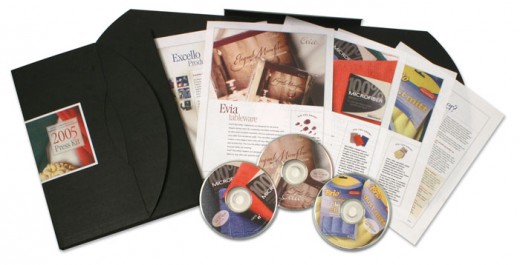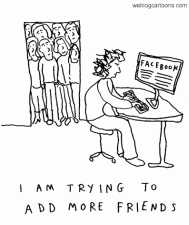FOR THE WHOLE KIT Develop a Concept: It matters if you have developed a good concept for the whole kit so that each piece or page is recognizable as part of the kit. This gives the impression that you really mean business because you took the time and effort to really weave everything together into one solid piece. It doesn’t have to be an exaggerated concept. You can simply have a uniform lay-out for all the write-ups, a particular color scheme or artwork. This effort is the “extra mile” that might impress the big guys. Be Organized: You can be as creative as you want with your concept but always make sure the whole kit is not a mess. An organized press kit shows that you mean business and that you are a ‘responsible’ artist. Choose a folder that is sturdy enough to support the contents. Do not use cheap-looking materials: Create a professional image by using good quality materials for your kit. Use good quality paper, ink, and CD cases for your Demo CD. It may cost a little more but it can help you create a good impression. THE PARTS DEMO TAPE: This should include only 3-4 of your best songs. Make sure that you check the sound quality of each before sending them. As explained above, it helps if your CD case matches with the whole kit. WRITE-UP: This includes the press kit cover (optional), Biography, Fact Sheet, and Press Quote sheet. When it comes to the write-ups, the shorter is always the better. These people are swimming in press kits so their attention span is shorter than that of a person with ADHD. If they get lost in one paragraph because of difficult words or complicated fonts, they do not bother comprehending it. If the story gets boring, they might not continue reading it. Therefore, if you write for your press kit, make it interesting (but do not oversell yourself as this would likely turn them off) and make it short. Do not write more than one page for each part. Make it brief, concise, and interesting. *PRESS KIT COVER: This should give them an overview or summary of you/your band-who you are, what type of music you play, your logo, contact information. *BIO: Again, include only the necessary details. Do not include things that are not related to your music because you only have one page to impress them about your music background. Try to be unique by sharing important details (related to music, of course) and do not simply state facts like you’re filling out a form. It may work if you focus on one part of your life when you decided to become a musician, you may write about the hardships you’ve encountered as a musician. *FACT SHEET: The fact sheet should include a list (in bullet form) of important information about you or your band-sales figures, airplay, shows you’ve played, tours, etc. Again, the shorter it is the better so only include the very essential and impressive ones. If you have a hard time choosing, write down everything and rank them. *PRESS QUOTE SHEET: These should include newspaper clippings, good reviews from journalists, musicians, and the press. Be sure these are facts or else you’ll pay for your deception afterward. PHOTOS: These are the photos that will be used by the press people when they decide to feature you so you better have a decent, if not excellent, photograph. The standard for newspapers is 8X10 Black and White. For those kits that you’ll send out to non-press people, you can just print them in bulk-duplicated prints to cut-down your expenses. Don’t forget to include short descriptions of the pictures. LOGO: Well, it is not necessary for regular press kits but it definitely is a plus. It creates an impression that you are serious in pursuing a career because you actually took the effort and time to conceptualize. Since you have already conceptualized a logo, that might imply that you already know your band, that you have already established your goals, and that you have enough drive to be part of the industry. This is also useful to grab their attention and for easy recall. Use it on your letterhead, your contact info, business card, website, and demo CD. CONTACT INFO: This should include you/ your band’s name, Contact Name, Phone, Website, E-mail, and your logo. Just to make sure that they will not lose your contact info and that they can access it right away, place them in all of these individual items. Yes, that means you place your contact info on the press kit cover, the fact sheet, etc. They are busy people and if you just place your contact info on one page, they might lose that page with some of the clutter. It also helps if you put your business card on your press kit. They might want to contact you when they’re home so by including your business card, you make their lives easier. These are just the basics but I think I pretty much covered the necessary ones. I hope you will find this useful when you’re making your press kit and I hope that this will help you win the attention of the right people. Good Luck! _______________________________________________________________________ Unified Manufacturing is an L.A. -based one-stop-shop that offers very affordable CD/DVD/USB replication, custom printing, promotional products, warehousing and fulfillment and many more. If you need an Instant Quote on a project and you want FREE SHIPPING, simply CLICK HERE.]]>





2 Replies to “Indie Musicians: How to Make a Kick-Ass Press Kit”